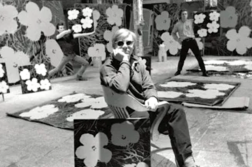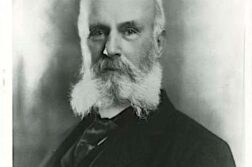AS MEDICAL SCIENCE presses forward to find a cure for HIV—and as we mark the thirtieth anniversary of the discovery of HIV as the cause of AIDS—it’s useful in the compressed timeframe known as “AIDS time” to recall one of the most pivotal moments of the now-33-year-long AIDS epidemic: the discovery of the microbe that has wreaked hell on humankind. Such a recollection can help us to appreciate how far we’ve come, and renew our hope and determination to press onward toward our ultimate goal: A world free of AIDS.
Aftermath of a Discovery
The air buzzed with anticipation in the first floor auditorium of the Hubert H. Humphrey Building in downtown Washington, D.C., early in the afternoon on Thursday, April 23, 1984. Every major television network and newspaper had reporters there. Cameras and notebooks were poised, waiting for the announcement that a frightened public and desperate gay community had been waiting for three years to hear. By then, 4,177 cases of AIDS had been diagnosed in the United States; 1,807 Americans had already died, most of them gay men.
On the platform sat a small group of men, each of them a leader of America’s scientific response to AIDS: Dr. Ed Brandt, Assistant Secretary for Health; Dr. Vincent DeVita, director of the National Cancer Institute (NCI); Dr. James B. Wyngaarden, director of the National Institutes of Health; Dr. Peter Fischinger, associate director of the NCI; and Dr. Robert C. Gallo, chief of the NCI’s Laboratory of Tumor Cell Biology.
But it was a diminutive woman with a Washington power-helmet hairdo and laryngitis that everyone was waiting to hear. Margaret M. Heckler, Secretary of Health and Human Services, that day delivered the most exciting news of all to that point in the AIDS epidemic. “First,” she said, “the probable cause of AIDS has been found—a variant of a known human cancer virus, called HTLV-III. Second, not only has the agent been identified, but a new process has been developed to mass-produce the virus. This discovery is crucial because it enables us for the first time to characterize the agent in detail and to understand its behavior. Thirdly, with discovery of both the virus and this new process, we now have a blood test for AIDS which we hope can be widely available within about six months.”






